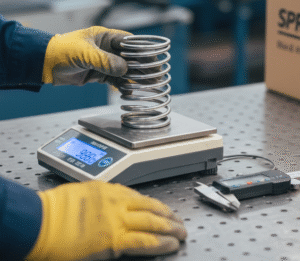Looking to enhance the durability, aesthetics, and lifespan of your products? Look no further than plastisol dip coating! This innovative technique offers a variety of benefits that will protect, beautify, and extend the lifespan of your products.
Plastisol dip coating is a versatile process that involves submerging an object into a liquid plastisol compound and then baking it to create a thick, durable, and seamless coating. The resulting coating provides excellent protection against corrosion, abrasion, impact, and harsh environments.
Not only does plastisol dip coating offer exceptional protection, but it also adds an appealing aesthetic touch to your products. The coating can be customized to match any color, texture, or finish, allowing you to create a visually pleasing and unique product.
Understanding the benefits of plastisol dip coating:
Looking to enhance the durability, aesthetics, and lifespan of your products? Look no further than plastisol dip coating! This innovative technique offers a variety of benefits that will protect, beautify, and extend the lifespan of your products. Plastisol dip coating is a versatile process that involves submerging an object into a liquid plastisol compound and then baking it to create a thick, durable, and seamless coating. The resulting coating provides excellent protection against corrosion, abrasion, impact, and harsh environments. Not only does plastisol dip coating offer exceptional protection, but it also adds an appealing aesthetic touch to your products. The coating can be customized to match any color, texture, or finish, allowing you to create a visually pleasing and unique product. Furthermore, the thick and durable coating formed through plastisol dip coating extends the lifespan of your products by providing an additional layer of protection against wear and tear. This can result in significant cost savings by reducing the need for repairs or replacements. In conclusion, plastisol dip coating is a game-changer when it comes to product protection, aesthetics, and longevity. Incorporating this process into your manufacturing can elevate the quality and performance of your products, giving you a competitive edge in the market.
Protection: How plastisol dip coating can protect your products:
Plastisol dip coating offers a range of benefits that make it an ideal choice for product protection, beautification, and lifespan extension. Let’s delve into each of these benefits in more detail.
Protection: How plastisol dip coating can protect your products:
One of the primary advantages of plastisol dip coating is its ability to provide exceptional protection for your products. When an object is dipped into the liquid plastisol compound and then heated, a thick and seamless coating is formed. This coating acts as a shield, offering excellent resistance against corrosion, abrasion, impact, and harsh environments. Whether your products are exposed to extreme temperatures, chemicals, or physical stress, the plastisol dip coating will help them withstand these challenges. This added protection ensures that your products remain in optimal condition, reducing the risk of damage and increasing their longevity.
Beautification: Enhancing the appearance of your products with plastisol dip coating
In addition to its protective qualities, plastisol dip coating also allows you to enhance the aesthetics of your products. The coating can be customized to match any color, texture, or finish, enabling you to create visually appealing and unique products. Whether you want a glossy, matte, textured, or metallic finish, plastisol dip coating can deliver. This versatility in customization options opens up a world of possibilities for product design. By incorporating plastisol dip coating, you can elevate the visual appeal of your products, making them more attractive to customers and setting them apart from competitors.
Extending lifespan: Increasing the durability and longevity of your products
Another significant benefit of plastisol dip coating is its ability to extend the lifespan of your products. The thick and durable coating formed through this process acts as an additional layer of protection against wear and tear. As a result, your products are less susceptible to damage caused by daily use, exposure to the elements, or rough handling during transportation. By increasing the durability of your products, plastisol dip coating helps reduce the need for repairs or replacements. This not only saves you money but also ensures that your customers can enjoy your products for an extended period. The longevity provided by plastisol dip coating can significantly enhance customer satisfaction and loyalty.
Plastisol dip coating has a wide range of applications and can benefit various industries. Let’s explore some of the sectors that can leverage the advantages of plastisol dip coating.
Automotive industry
In the automotive industry, plastisol dip coating can be applied to various components, including handles, knobs, brackets, and suspension parts. The coating provides protection against corrosion, exposure to chemicals, and general wear and tear. Additionally, plastisol dip coating can be customized to match the desired color and texture, allowing manufacturers to create visually appealing and durable automotive parts.
Electronics industry
Electronics manufacturers can also benefit from plastisol dip coating. The coating can be applied to circuit boards, connectors, and other electronic components to offer protection against moisture, dust, and static electricity. Furthermore, the customization options of plastisol dip coating allow for branding and product differentiation, making electronic devices more visually appealing to consumers.
Sports equipment industry
Plastisol dip coating is widely used in the sports equipment industry to enhance the durability and grip of various products. From dumbbell handles and weight plates to bicycle handlebars and golf club grips, plastisol dip coating provides a protective layer that improves performance and extends the lifespan of sports equipment. The customization options of plastisol dip coating also enable manufacturers to create unique designs that resonate with athletes and sports enthusiasts.
Medical industry
In the medical industry, plastisol dip coating is used to improve the safety and functionality of medical devices. The coating can be applied to surgical instruments, catheters, and handles, providing a secure grip and reducing the risk of slippage during procedures. Plastisol dip coating also offers chemical resistance and easy cleaning, ensuring the longevity and usability of medical devices.
To better understand the plastisol dip coating process, let’s walk through the essential steps involved.
1. Surface preparation: The object to be coated is thoroughly cleaned and prepped to ensure proper adhesion of the plastisol compound. This step may involve sanding, degreasing, and masking of certain areas.
2. Dipping: The prepped object is then dipped into a tank containing the liquid plastisol compound. The object is submerged and then carefully lifted out, allowing the excess compound to drip off.
3. Coating thickness control: The object is then moved to an oven or heating chamber, where it is heated to cure the plastisol compound. The temperature and duration of the heating process determine the thickness and durability of the coating.
4. Cooling and inspection: After the heating process, the object is cooled and inspected for any imperfections or defects. Any necessary touch-ups or re-dipping can be done at this stage.
5. Quality control: Once the coating has cured and cooled, it undergoes quality control checks to ensure it meets the desired specifications. These checks may include adhesion tests, thickness measurements, and visual inspections.
Industries that can benefit from plastisol dip coating:
When selecting a plastisol dip coating provider, several factors should be taken into consideration to ensure the best results for your products. Here are some essential factors to keep in mind:
1. Experience and expertise: Look for a provider with a proven track record and extensive experience in plastisol dip coating. They should have a thorough understanding of the process and be able to offer expert advice on customization options and coating thickness.
2. Quality control measures: A reputable provider should have stringent quality control measures in place to ensure consistent and high-quality coatings. Inquire about their quality control procedures and certifications to ensure that your products will meet the desired standards.
3. Customization capabilities: If customization is important to your product design, choose a provider that offers a wide range of color, texture, and finish options. This will allow you to create the desired visual appeal and uniqueness for your products.
4. Turnaround time and capacity: Consider the provider’s turnaround time and production capacity to ensure they can meet your manufacturing timelines and volume requirements. A provider with efficient processes and adequate resources can help streamline your production.
5. Customer reviews and references: Take the time to read customer reviews and ask for references from other clients who have used the provider’s services. This will give you insights into their reliability, customer service, and overall satisfaction.
To further illustrate the benefits of plastisol dip coating, let’s examine a few real-world case studies.
Case study 1: Automotive industry
A leading automotive manufacturer incorporated plastisol dip coating into the production of their door handles. By utilizing plastisol dip coating, they were able to provide a durable and visually appealing finish to the handles. The coating offered excellent protection against corrosion, impact, and harsh weather conditions, ensuring the handles remained in pristine condition even after years of use. The manufacturer reported a significant reduction in customer complaints related to handle deterioration, resulting in improved customer satisfaction and brand reputation.
Case study 2: Sports equipment industry
A sports equipment manufacturer decided to apply plastisol dip coating to their weight plates. The coating not only enhanced the grip and durability of the weight plates but also allowed for customization with vibrant colors. This customization option appealed to fitness enthusiasts who wanted to personalize their workout equipment. The manufacturer experienced increased sales and positive customer feedback, attributing the success to the added value provided by plastisol dip coating.
Case study 3: Electronics industry
An electronics manufacturer started using plastisol dip coating on their connectors to protect them from moisture and dust. The coating also offered an additional layer of insulation, reducing the risk of electrical shorts. By incorporating plastisol dip coating, the manufacturer saw a significant decrease in product failures and returns due to environmental damage. The improved reliability of their connectors resulted in increased customer trust and repeat business.
Plastisol dip coating is a game-changer when it comes to product protection, aesthetics, and longevity. With its ability to provide exceptional protection against corrosion, abrasion, impact, and harsh environments, plastisol dip coating ensures that your products remain in optimal condition. The customization options of plastisol dip coating allow for visually appealing and unique product designs, setting your products apart from competitors. Additionally, the extended lifespan provided by plastisol dip coating reduces the need for repairs or replacements, translating into cost savings and increased customer satisfaction. Whether you operate in the automotive, electronics, sports equipment, or medical industry, incorporating plastisol dip coating into your manufacturing process can elevate the quality and performance of your products. By choosing a reputable provider and considering the specific needs of your industry, you can harness the benefits of plastisol dip coating and gain a competitive edge in the market.
Case studies: Real-world examples of the benefits of plastisol dip coating
Plastisol dip coating is a powerful technique that can transform your products by providing exceptional protection, enhancing their aesthetics, and extending their lifespan. To ensure you get the best results, it’s crucial to choose a reputable and experienced plastisol dip coating provider. Here are some factors to consider when selecting the right provider for your needs.
Firstly, it’s important to assess the provider’s expertise and experience in plastisol dip coating. Look for a company that has a proven track record of successfully coating a wide range of products. A provider with extensive experience will have the knowledge and skills to handle different materials, shapes, and sizes, ensuring a high-quality and uniform coating every time.
Another crucial factor to consider is the quality of the plastisol compound used by the provider. The compound should be of the highest quality to ensure a durable and long-lasting coating. Ask the provider about the specifications of the plastisol compound they use, such as its thickness, flexibility, and resistance to chemicals and UV radiation.
Additionally, it’s essential to evaluate the provider’s facilities and equipment. A well-equipped facility with modern machinery and tools indicates that the provider is committed to delivering top-notch results. State-of-the-art equipment can ensure precise and consistent coating thickness, as well as efficient and timely production.
Furthermore, consider the provider’s customization capabilities. Plastisol dip coating offers endless possibilities for color, texture, and finish. Look for a provider that can match your desired specifications accurately and consistently. A provider with a wide range of color options and the ability to create custom colors will allow you to create visually appealing and unique products.
Lastly, don’t forget to inquire about the provider’s quality control processes. A reliable provider will have strict quality control measures in place to ensure that each coated product meets your specifications and industry standards. This may include visual inspections, adhesion tests, and other quality checks to guarantee a flawless final product.
Choosing the right plastisol dip coating provider is vital to ensure that you reap all the benefits of this innovative technique. By considering factors such as expertise, quality of the compound, facilities and equipment, customization capabilities, and quality control processes, you can find a provider that will deliver exceptional results and help your products stand out in the market.
Plastisol dip coating has been widely adopted by various industries for its numerous benefits. Let’s explore some real-world case studies that showcase the advantages of using this technique.
Case study 1: Automotive industry
In the automotive industry, where durability and protection are paramount, plastisol dip coating has proven to be a game-changer. One prominent example is the coating of suspension components such as control arms and sway bars. These parts are subject to constant exposure to harsh road conditions, including moisture, salt, and debris. Plastisol dip coating provides an excellent solution by creating a resilient barrier that protects against corrosion, impact, and abrasion. As a result, the lifespan of these components is significantly extended, leading to reduced maintenance costs and improved overall vehicle performance.
Case study 2: Sports equipment
Plastisol dip coating has also found its way into the sports equipment industry, revolutionizing the way certain products are manufactured. Take, for instance, the coating of dumbbell weights. Traditionally, dumbbells were coated with paint, which tended to chip and wear off over time. Plastisol dip coating offers a superior alternative by creating a thick and durable coating that withstands the rigors of daily use. The coating not only protects the weights from damage but also provides a comfortable and slip-resistant grip for the user. Additionally, the ability to customize the color and texture of the coating allows manufacturers to create visually appealing and brand-specific designs, enhancing the overall appeal of their products.
Case study 3: Electrical industry
In the electrical industry, where safety and reliability are critical, plastisol dip coating has become a go-to solution for insulating and protecting electrical components. One example is the coating of electrical connectors. These connectors are exposed to moisture, chemicals, and temperature variations, which can compromise their performance and longevity. Plastisol dip coating offers an effective insulation solution, ensuring that the connectors remain protected from environmental factors and preventing the risk of short circuits or electrical failures. The coating also provides additional mechanical strength, improving the durability and overall lifespan of the connectors, thus reducing the need for frequent replacements and minimizing downtime.
These case studies demonstrate the tangible benefits of plastisol dip coating across various industries. Whether it’s in automotive, sports equipment, electrical, or countless other sectors, this technique has proven to be a versatile and reliable solution for enhancing product protection, aesthetics, and longevity
Related Posts

Smart Micro-Springs: The Next Frontier in Spring Technology for India’s Manufacturing Future
Introduction In an age of

Why Medical and Automotive Companies Choose Precision Springs Over Standard Ones
When it comes to performance

Why Fatigue Testing Is Essential in Precision Spring Manufacturing
Introduction Fatigue testing is a

Why IATF Certified Spring Manufacturers in India Are the Top Choice in 2025
In today’s fast-moving industrial world,











